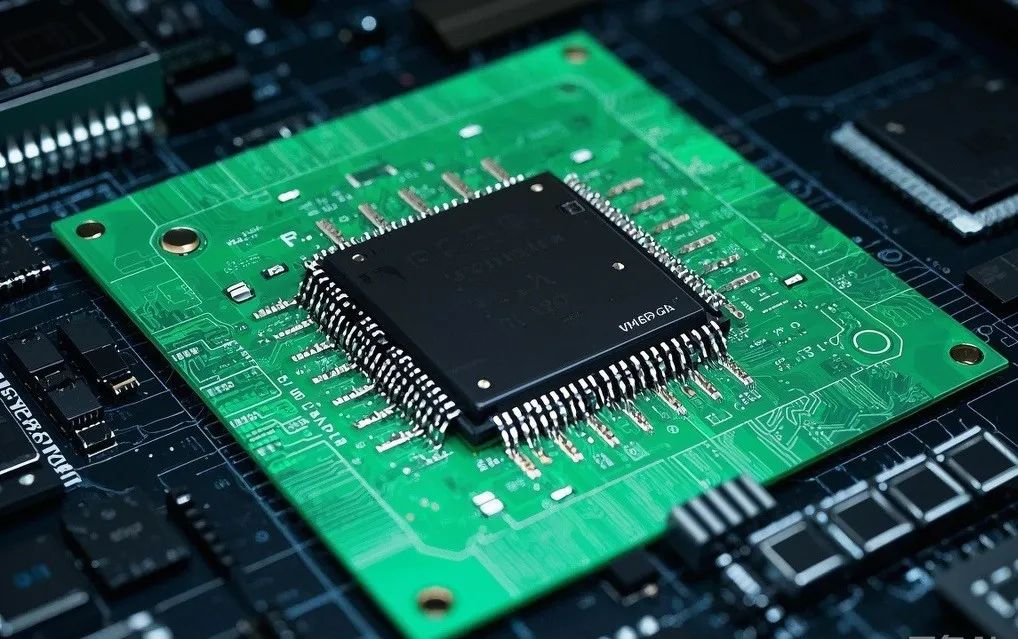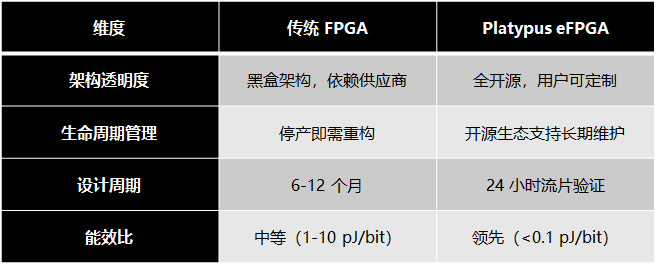
On March 21, 2025, the American semiconductor startup Zero ASIC launched the world’s first 100% open source eFPGA IP product, Platypus, completely breaking the traditional “black box model” in the FPGA field.
This revolution not only transforms chip design from a “luxury item” into a “mass consumer product,” but it may also trigger a chain reaction similar to RISC-V’s disruption of the CPU industry. As founder Andreas Olofsson stated: “Open standards will fundamentally change the game for FPGA system design.”
1. The Disruptor: When the ‘Android Model’ Invades Hardware
The closed ecosystem of FPGAs has long been regarded as an unshakable rule, with Xilinx and Intel monopolizing 95% of the global FPGA market for nearly thirty years. However, Zero ASIC’s breakthrough strategy is exceptionally sharp: transforming hardware design into freely disassemblable “code blocks.”
In the technical system of Platypus, three major open features are highly symbolic:
-
Architecture open-source public wafer-level design blueprints, akin to handing over the load-bearing structure of skyscrapers to every architect;
-
Bitstream transparency cracking hardware instruction set encryption, allowing users to adjust underlying logic like modifying the Android system;
-
Toolchain decoupling supports developers to mix and match tools from Cadence, Synopsys, etc., ending the dominance of closed-source EDA software.
Core technological breakthroughs often occur at the intersection of fields. The core innovation of Platypus lies in its modular system integration capability:
-
Standardized chip library: Supports O(m^n) level system arrangements (m is the library capacity, n is the number of board sockets), allowing for rapid generation of customized chip systems through “Lego-style” combinations;
-
3D smart substrate technology: Separates computing and networking functions using active silicon substrates, achieving low-latency communication (<0.1 pJ/bit) in wafer-level design, while optimizing hardware simulation efficiency (10 times faster than commercial simulators) through the Switchboard digital twin platform;
-
Automated IP generation: Achieves “one-click generation” of FPGA, CPU, NoC, and other IPs through the SiliconCompiler platform, compressing the tape-out cycle to 24 hours and supporting verification across multiple process nodes from 12nm to 65nm.

Even more disruptive is that this system may be incubating a parallel track for chip open-source innovation, allowing global companies to design chips based on the Platypus architecture, avoiding various export control dependencies.When hardware design shifts from subtraction to addition, the door to innovation is opening.
2. The Counterattack: Traditional Giants’ ‘Scorched Earth Defense’
In the face of the open-source wave, semiconductor giants will inevitably launch counterattacks. Perhaps soon, some giants will announce the partial open licensing of their products, seemingly embracing openness, but in reality, consolidating ecological control through a “half-hearted approach”—opening low-end logic unit architectures while keeping key modules closed.
This strategy reflects the complex mindset of traditional forces: needing to respond to the impact of open-source while unwilling to give up the hundreds of billions of dollars in FPGA market profits each year.
A more covert battle is taking place in the patent jungle. Behind the legal wars is a deadly struggle for industry discourse power. This often exposes the deep anxieties of traditional business models: as the dominance of hardware design shifts from corporate labs to open-source communities, the value of patent moats is evaporating.
However, the disruptive power of Platypus lies in reconstructing the FPGA value chain. By achieving technological services across various industries through open-source, it can lower entry barriers and expand industry coverage. Significantly reducing development and application costs, once this innovative ecosystem scales, the moats that traditional manufacturers have spent billions to build may be threatened.
Just as digital cameras disrupted Kodak’s film empire, open-source FPGAs are replicating the classic narrative of “disruptive innovation” in the hardware field.
3. The Awakener: ‘Fission and Hidden Wounds’ in the Open Source World
Amid the celebration of the open ecosystem, there are bound to be undercurrents. We know that FPGA chips are widely used in critical fields such as aerospace, communications, military, medical, and industrial control, and the formation of open-source will inevitably present challenges.
The security issues of programmable hardware systems pose greater challenges than software systems; if a large number of open-source IP cores are used with un-audited debug interfaces, it theoretically provides attackers with new targets. The fatal weakness of open-source hardware: the visibility of code does not equate to controllability of security.
Deeper contradictions lie in the lack of standards. When every developer can define logic unit standards, the compatibility of FPGA modules faces severe tests. This risk of fragmentation may repeat the mistakes of early Linux—excessive architectural differentiation will consume ecological cohesion.
But the pace of technological revolution cannot be stopped; the development of modern technological civilization will not restrict the speed of cars to that of horse-drawn carriages. The wheels of the times roll forward, and the open ecosystem also has its ultimate charm: when the choice of technology returns from the conference room to the workstation, the semiconductor industry will also experience a shift from “capital-driven” to “creativity-driven”.
4. Dawn and Fog
In the narrative of open-source FPGAs, the most enlightening aspect is not a specific technical parameter, but the potential for technological equality it demonstrates. When chip design is no longer the patent of a few giants, when one day African makers and Silicon Valley engineers share the same toolchain, this transformation will transcend the realm of commercial competition and become a historical marker of digital civilization evolution.
However, while embracing openness, the industry must establish new contracts—a consensus system regarding security, standards, and ethics. Just as firearms reshaped the rules of war without abolishing war, open-source technology breaks monopolies but does not eliminate competition.
In this new land, innovators need not only the courage to dismantle high walls but also the wisdom to build bridges.
·THE END·

For more details, contact: Teacher Li: 18008385791
If you’ve read this far, please give us a follow!!